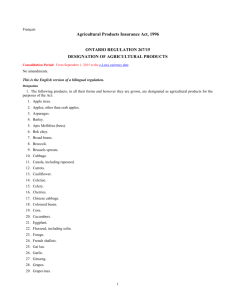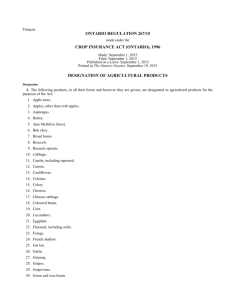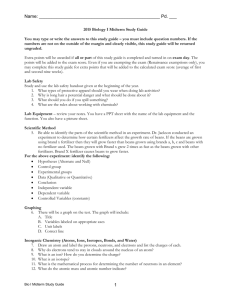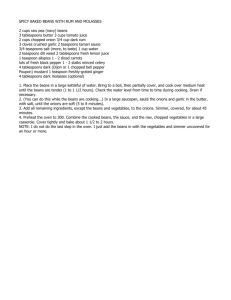Recent Developments in the Psychology of Risk
advertisement
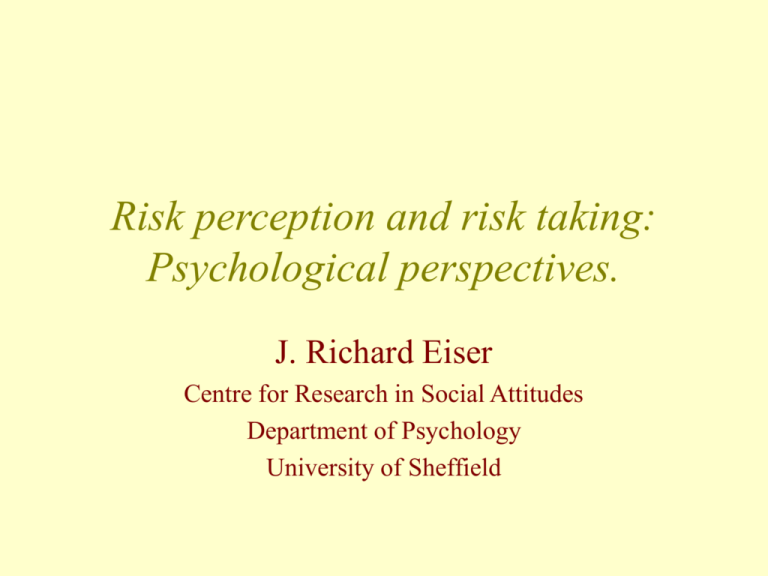
Risk perception and risk taking: Psychological perspectives. J. Richard Eiser Centre for Research in Social Attitudes Department of Psychology University of Sheffield Risk and probability: Annual risk of dying from... • • • • • • • Smoking 10 cigarettes a day Influenza Road accident Accident at home Accident at work Homicide Railway accident 1 in 200 1 in 5000 1 in 8000 1 in 26000 1 in 43500 1 in 100000 1 in 500000 Estimating probability. • Some risks are underestimated, some are overestimated, and some are unknown. • Statistical reasoning is difficult, so people rely on ‘rules of thumb’, e.g. frequency of news reports, personal experience. • Personal experience can be unrepresentative. • People often don’t see population statistics as personally applicable. Where do risks come from? • Risk involves uncertainty about the likelihood of events and the value of their consequences. • Risk arises from interactions between people and their social and physical environment. • Risk depends not only on physical conditions but also on human actions and decisions. Risk and uncertainty Risky decisions involve uncertainty about: • What will happen (likelihood); • How good or bad the consequences will be (value). • Risk controversies can reflect divergent values as well as disagreements over facts. Key psychological processes • Attitudes – what do we want, like or fear? • Decisions – how do we choose what to do? • Learning – how do we come by our attitudes and beliefs? • Social influence – how do other people influence our attitudes, beliefs and behaviour? Attitudes Communicators, advertisers, etc. attempt to change people’s attitudes by: • Changing perceived likelihood of consequences; • Associating positive or negative value with objects or activities. • Such associations may be emotional rather than factual. Sunscreen use on Tenerife (%) Locals Continentals British No sunscreen 40.2 22.2 27.8 SPF = 1 - 4 22.4 16.7 24.1 SPF = 5 – 14 29.0 40.8 40.8 SPF = 15+ 8.4 20.4 7.4 Optimism vs. Sunscreen (r) Optimism vs. Exposure (r) Fair skin vs. Sunscreen (r) - - negative negative negative positive - positive negative Decision-making under uncertainty Danger ? Cautious criterion Risky criterion Safety Diagnosis Disease present Disease absent True positive Correct diagnosis Appropriate treatment False negative Incorrect diagnosis Failure to treat Actual disease status Disease present Disease absent Learning False positive Incorrect diagnosis Inappropriate treatment Not necessarily Unless inappropriate treatment harms patient, improved health increases confidence in treatment. True negative Correct diagnosis No unnecessary treatment Hopefully Poor outcome following failure to treat should prompt test reappraisal. Learning • We tend to repeat actions, or stick with beliefs, that have brought us success or pleasure in the past (‘reinforcement’). • We tend to avoid activities and objects that have brought us failure or displeasure. • Hence, we tend to ‘over-sample’ more familiar (trusted) activities and objects. • Expectancies of good or bad outcomes may be confirmed or contradicted by experience. Feedback from experience is typically selective Approach behaviour can produce informative feedback whereas avoidance behaviour does not. If you avoid something you believe to be dangerous, you will typically not discover whether your fears were justified. This means that ‘risk-averse’ fears and prejudices may persist because they aren’t fully tested. Feedback may be delayed or inconsistent • Risk-taking (incorrect approach behaviour) may also persist because feedback is… • Delayed – e.g. harmful effects of smoking; • Inconsistent – e.g. not all cases of dangerous driving lead to accidents. The Beanfest Project Collaborators: Russell Fazio Natalie Shook (Ohio State) Tom Stafford Tony Prescott (Sheffield) Beanfest • Beanfest is a virtual world containing good and bad beans. • Good beans give you energy, bad beans make you lose energy. If you lose too much energy, or never eat, you die. • You have to learn which beans are good and bad, but to do this you have to try them. If you don’t try them, you’ll never find out. The beans • • • • The beans vary in terms of two dimensions: Shape, from round to oblong Number of speckles Clusters of good and bad beans are located in different parts of the 2-d ‘space’. Speckles (Y) 10 9 8 7 6 5 4 3 2 1 Shape (X) 1 2 3 4 5 6 7 8 9 10 Experimental findings • Participants find the task quite difficult. • Good beans are learnt less well than bad beans, some good beans being consistently avoided as though they are bad. • Generalisation occurs to untrained beans on basis of proximity (similarity). • Participants learn to correct positive but not negative ‘prejudices’. “Points” Experiment: Mean Proportion Correct as a Function of Feedback and Valence Test Phase 0.75 0.70 0.65 0.60 0.55 0.50 Contingent Feedback Positive Full Feedback Negative ACTION S ELECTION MECHANIS M 1 output unit (action) 1 state unit (‘energy’) noise 1 output unit (evaluation) LEARN ING S YS TEM 3 hidden units 22 input units 11 to encode shape (X axis) 11 to encode speckles (Y axis) Results of simulations • Bad beans are learnt better than good beans. • Some good beans are consistently avoided as though they are bad. • Such learning generalises to novel beans with similar features. • If connections are ‘seeded’ to produce specific errors, the network corrects positive, but not negative, ‘prejudice’. Implications for decision-making If decisions are guided by expectancies… • Choices will be risk-averse (for gains) where this yields satisfactory outcomes. • Individuals will experience more positive than negative outcomes. • Unknown objects will be assumed to be more negative than positive. And in real life.. • If we have sufficient resources and freedom of action, we may avoid anything we expect, rightly or wrongly, to be unsafe. • Most of our experiences will then be happy and we’ll be pretty pleased with ourselves. • But many people don’t have the resources or freedom to control their experiences in this way. Social influence • Where we lack direct personal experience it often makes sense to imitate, or learn from, others. But which others? • We are more likely to trust our friends. • Our friends will tend to have similar attitudes and experiences to our own. • Hence, social networks will tend to reinforce our existing attitudes. • Media may amplify or attenuate the perceived seriousness of hazards. Trust • Trust can involve reliance on others both as controllers of risks and as informants about the extent of any risk. • Trust can depend on implicit estimates of the others’ competence, partiality and honesty. • If ‘experts’ are seen as having a vested interest, this may undermine trust. Why risk perceptions resist change • We (fail to) test our prior beliefs, by looking for confirmation rather than falsification. • We rely on those we like and trust for information, but such people are more likely to share and confirm our prior beliefs. • We all process information selectively, but typically lack insight into how selective we’re being.

